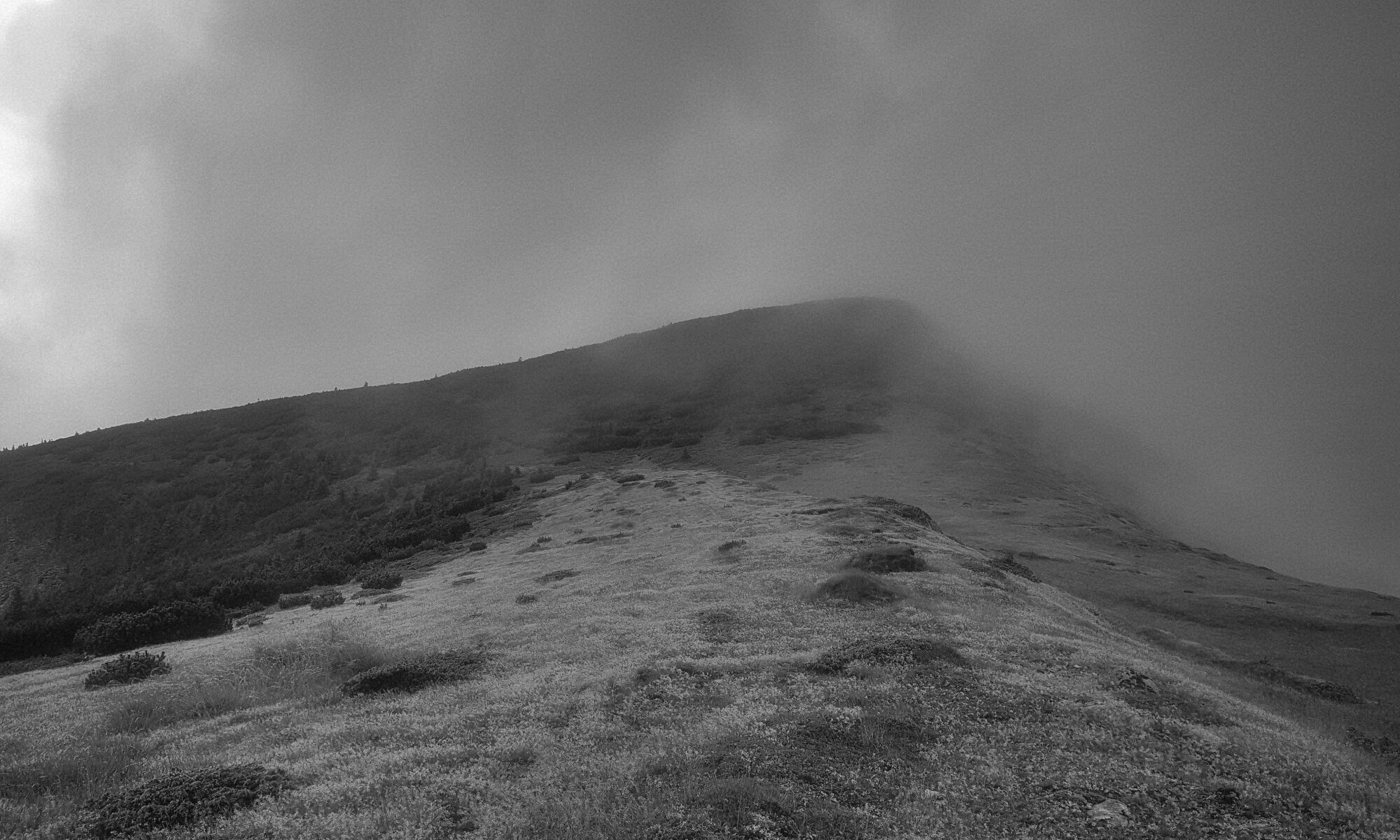THE GRASSY MOUNTAINS. “Mountains of Thieves” located north of the “River of Thieves”, also called the Ştefleşti Mountains. We hiked them without a map, and indeed I don’t know if a map of the area even exists. Kilometer after kilometer of grass, flat, layered cliffs and Asian-like steppes, horizon to horizon. I am astonished when, after hours of trudging, we rise again to the horizon only to discover more ridges rolling off into the distance. We do not encounter a single dwelling, only shepherds from a different world. An old engraving published long ago by the Hungarian Carpathian Society shows shepherds standing beside a gneiss cliff on Ştefleşti Peak. They grin roguishly at us as their dogs stare stubbornly on. Three-quarters of a century later, and the same cliffs, the same expressions, the same bristly faces, the same fur coats, the same snarling dogs. The grandsons of olden shepherds, the great-grandsons of bygone dogs – they stand before us unchanged! Be grateful for such lands, little brother, they are few and vanishing!
On high Lotru plateaus, dogs fight fiercely and distant horses whinny. Land of hailstones and sweet grassy beds. We descend to the valley with evening. Chilly air rises from Lotru waters, but the sun high above illuminates the southern horizon, rimmed by the white cliffs of the Latorița Mountains. Beneath the slopes nestles a tiny settlement called Obîrşia Lotrului, which boasts a little shop that sells exploding beer, watermelons, black bread, and long-untasted sugar. We are the only foreigners, perhaps the only customers. The shopkeeper sells sugar – a precious commodity in Romania – in the most peculiar way: only some customers are allowed to buy the damp yellow crystals, the others are not, no matter how much they beg and wave their money.
The rest of that exquisite day is spent resting on the banks of the Lotru River, protecting our shelter from curious bulls, eating bread and watermelon, and sampling amber sugar.
